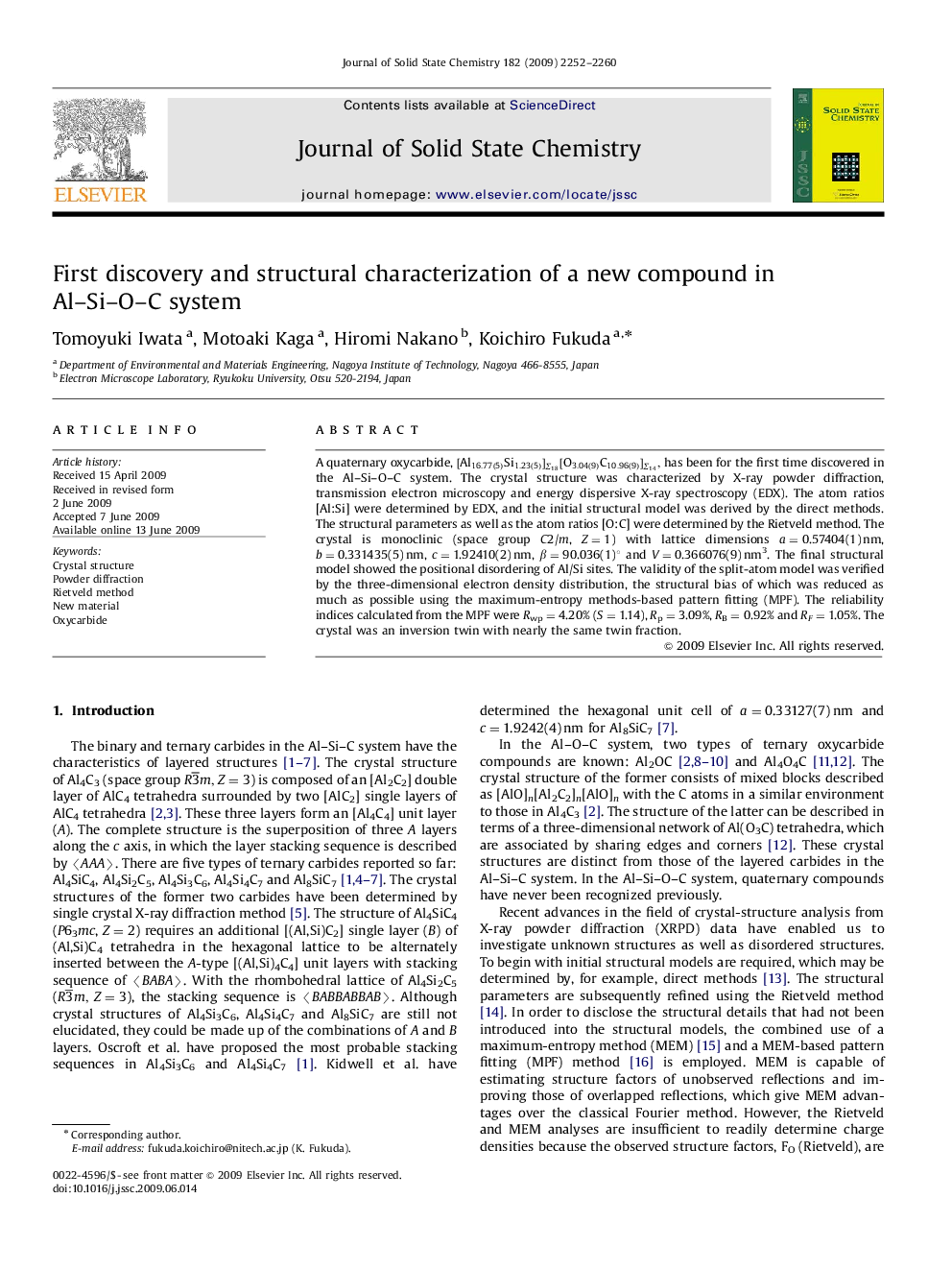| Article ID | Journal | Published Year | Pages | File Type |
|---|---|---|---|---|
| 1331695 | Journal of Solid State Chemistry | 2009 | 9 Pages |
A quaternary oxycarbide, [Al16.77(5)Si1.23(5)]Σ18[O3.04(9)C10.96(9)]Σ14,[Al16.77(5)Si1.23(5)]Σ18[O3.04(9)C10.96(9)]Σ14, has been for the first time discovered in the Al–Si–O–C system. The crystal structure was characterized by X-ray powder diffraction, transmission electron microscopy and energy dispersive X-ray spectroscopy (EDX). The atom ratios [Al:Si] were determined by EDX, and the initial structural model was derived by the direct methods. The structural parameters as well as the atom ratios [O:C] were determined by the Rietveld method. The crystal is monoclinic (space group C2/m, Z=1) with lattice dimensions a=0.57404(1) nm, b=0.331435(5) nm, c=1.92410(2) nm, β=90.036(1)° and V=0.366076(9) nm3. The final structural model showed the positional disordering of Al/Si sites. The validity of the split-atom model was verified by the three-dimensional electron density distribution, the structural bias of which was reduced as much as possible using the maximum-entropy methods-based pattern fitting (MPF). The reliability indices calculated from the MPF were Rwp=4.20% (S=1.14), Rp=3.09%, RB=0.92% and RF=1.05%. The crystal was an inversion twin with nearly the same twin fraction.
Graphical abstractA quaternary oxycarbide firstly discovered in the Al–Si–O–C system. The crystal is an inversion twin, and hence the structure is represented by a split-atom model. The three-dimensional electron density distribution is determined by the maximum-entropy methods-based pattern fitting, being consistent with the disordered structural model.Figure optionsDownload full-size imageDownload as PowerPoint slide
